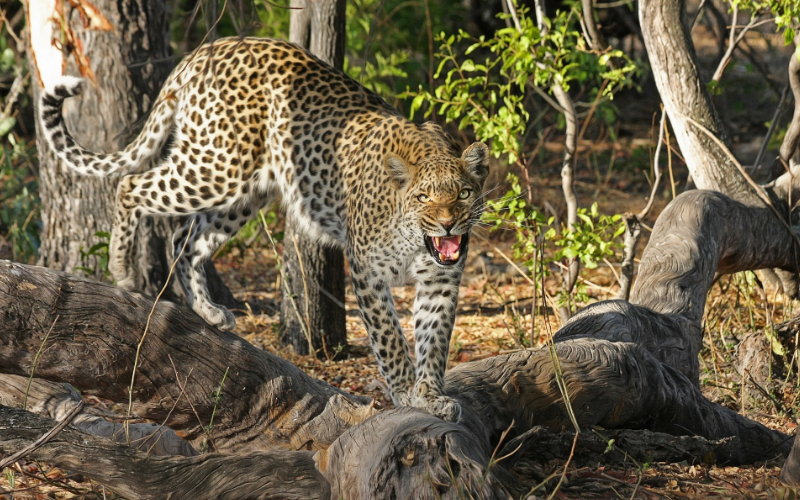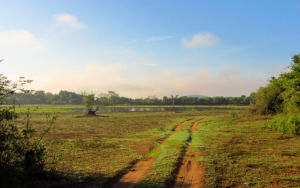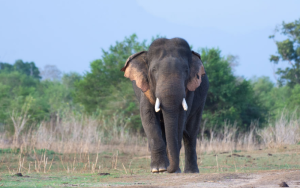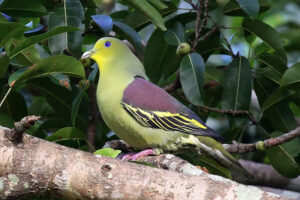Are you a wildlife enthusiast looking to experience the thrill of a safari? A wildlife safari is a once-in-a-lifetime opportunity to witness the beauty of nature up close and personal. Planning the perfect safari can be overwhelming, but with the right information, you can experience the adventure of a lifetime. In this article, we will discuss the benefits of going on a wildlife safari, popular destinations, the best time to go, choosing the right safari experience, planning your safari, what to pack, staying safe, etiquette and rules to follow and capturing the perfect wildlife photos. So, let’s dive in.
Benefits of Going on a Wildlife Safari
There are numerous benefits of going on a wildlife safari. Firstly, it allows you to connect with nature, and witness animals in their natural habitat. This experience is both humbling and awe-inspiring. Secondly, it provides a break from the monotony of daily life and allows you to immerse yourself in a new culture. It is an opportunity to learn about different cultures and ways of life. Thirdly, it is a great bonding experience for families and friends. You will create memories that will last a lifetime. Lastly, wildlife safaris are a great way to support conservation efforts. By visiting national parks and reserves, you are contributing to the preservation of these areas and the animals that call them home.
Popular Destinations for Wildlife Safaris
There are numerous destinations around the world that offer amazing wildlife safaris. Some of the most popular destinations are:
Tanzania
Tanzania is home to the Serengeti National Park, which is renowned for its great wildebeest migration. The migration is one of the most incredible wildlife events in the world, and witnessing it is an experience like no other.
Kenya
Kenya is home to the Maasai Mara Reserve, which is famous for its lion populations. It is also home to numerous other wildlife species such as elephants, buffalos, and rhinos.
South Africa
South Africa is home to the Kruger National Park, which is one of the largest game reserves in Africa. It is home to the Big Five – lions, elephants, buffalos, leopards, and rhinos.
India
India is home to numerous national parks and reserves, the most famous of which is the Kanha National Park. It is home to the Bengal tiger, which is one of the most endangered species in the world.
Sri Lanka
Sri Lanka is a lesser-known destination for wildlife safaris, but it offers an incredible array of wildlife and natural beauty. The country has a diverse range of ecosystems, from lush rainforests to arid plains, each home to unique wildlife species.
One of the most popular wildlife destinations in Sri Lanka is the Yala National Park, which is home to leopards, elephants, and a wide range of bird species. Other popular national parks include Udawalawe, Wilpattu, and Minneriya.
Safari experiences in Sri Lanka typically involve game drives in specially-designed vehicles, led by experienced guides who share their knowledge of the local flora and fauna. Visitors can also take part in guided walks and birdwatching tours, which offer a more immersive and educational experience.
The best time to visit Sri Lanka for wildlife safaris is during the dry season, which runs from December to March, when wildlife is more active and easier to spot. However, some national parks, such as Yala, are open year-round, and visitors can still see a wide range of wildlife during the wet season.
Overall, a safari in Sri Lanka is a unique and unforgettable experience for wildlife enthusiasts looking to explore a lesser-known destination and discover the incredible natural beauty of this tropical island nation.
Best Time to Go on a Wildlife Safari
The best time to go on a wildlife safari depends on the destination and the animals you want to see. In general, the best time to go is during the dry season when the animals are easier to spot as they congregate around water sources. In East Africa, the dry season is from June to October, while in Southern Africa, it is from May to October. In India, the best time to visit is from November to March when the weather is cool and dry.
Choosing the Right Safari Experience
Going on a safari is a dream come true for many travelers, and it’s essential to choose the right safari experience to make the most out of your trip. Here are some tips to consider when choosing a safari:
Research the location: Different regions have different wildlife and landscapes, so it’s essential to choose a location that offers the type of experience you want.
Decide on the type of safari: Game drives, walking safaris, and hot air balloon safaris are just a few of the safari experiences available. Consider your interests, fitness level, and budget when choosing the type of safari.
Choose a reputable tour operator: A reputable tour operator can make all the difference in your safari experience. Look for operators with experienced guides, positive reviews, and a commitment to sustainability.
Consider the time of year: Wildlife sightings can vary depending on the time of year, so consider when you want to go and what you hope to see.
Plan for extra activities: Safaris can be physically demanding, so it’s essential to plan some downtime and other activities to balance out your itinerary.
By considering these factors, you can choose the right safari experience that meets your expectations and creates unforgettable memories.
Game Drives
Game drives are one of the most popular ways to experience wildlife in their natural habitats. They are typically conducted in specially-designed vehicles, such as jeeps or trucks, and guided by experienced safari guides. Game drives can take place in a variety of settings, such as national parks, game reserves, and private game farms.
During a game drive, you will have the opportunity to see a wide variety of animals, including the famous African Big Five (lion, leopard, elephant, buffalo, and rhinoceros). However, it’s important to remember that seeing wildlife is never guaranteed, as they are free to roam and can be elusive at times.
Game drives usually take place early in the morning or late in the afternoon, when wildlife is most active. The guides will use their knowledge of animal behavior to track and locate wildlife, and will stop frequently to allow you to take photos and observe the animals in their natural habitats.
If you’re planning a safari, a game drive is an essential experience that will give you a deeper understanding and appreciation of the incredible wildlife of Africa. Make sure to bring a camera, binoculars, and plenty of patience, and be prepared for an unforgettable adventure.
Walking Safaris
A walking safari is a unique way to experience wildlife up close and personal. Rather than observing from a vehicle, walking safaris offer the opportunity to explore the African wilderness on foot, led by experienced guides who share their knowledge of the flora and fauna along the way.
Walking safaris allow you to truly immerse yourself in the environment and to appreciate the beauty of the smaller details that may be missed from a vehicle. As you walk, you may come across various animal tracks, droppings, and scents that tell the story of the area’s wildlife. You can also learn about the local communities, their way of life, and how they coexist with wildlife.
One of the biggest draws of a walking safari is the sense of adventure and adrenaline that comes with being on foot in the African bush. It’s an experience that requires a heightened sense of awareness, as you may encounter wild animals at close range. However, walking safaris are always conducted with the utmost care for the safety of the guests and the wildlife.
Walking safaris are usually done in small groups and can range from a few hours to several days, with overnight camping in the bush. They are offered in various game reserves and national parks throughout Africa, including South Africa, Tanzania, Zambia, and Zimbabwe. It’s an experience not to be missed for those seeking a unique and authentic African safari experience.
Hot Air Balloon Safaris
Hot air balloon safaris offer a unique and thrilling way to explore the African wilderness from above. With uninterrupted views of the vast landscapes and wildlife below, hot-air balloon safaris provide a truly unforgettable experience.
These safaris usually take place in the early morning, offering a serene and peaceful journey as you glide through the air with the sunrise as your backdrop. Hot air balloon safaris are popular in many African countries such as Tanzania, Kenya, and South Africa, and are often combined with other safari activities for a well-rounded experience. Safety is of utmost importance during these safaris, and experienced pilots and well-maintained equipment ensures a safe and enjoyable flight for all passengers.
Planning Your Wildlife Safari
Planning a wildlife safari can be a daunting task, but with the right preparation, it can also be a rewarding and unforgettable experience. Here are some tips to help you plan your next wildlife safari:
Determine your budget: Wildlife safaris can vary in price depending on the destination, time of year, and level of luxury. Determine your budget and choose a safari that fits within it.
Choose your destination: There are many wildlife safari destinations around the world, each with its own unique wildlife and landscapes. Research destinations that interest you and consider factors such as accessibility, wildlife, and cultural experiences.
Decide on the type of safari: Game drives, walking safaris, and hot air balloon safaris are just a few examples of the different types of safaris available. Consider your preferences and choose a safari that fits your interests and comfort level.
Choose a reputable tour operator: Look for a tour operator with a good reputation for wildlife conservation and ethical tourism practices. Check reviews and ask for recommendations from fellow travelers.
Prepare for the climate: Wildlife safari destinations can have extreme temperatures and weather conditions. Pack appropriate clothing and gear for the climate, and don’t forget sunscreen and insect repellent.
Learn about the wildlife: Research the wildlife you will encounter on your safari and learn about their behavior and habits. This will enhance your experience and help you better appreciate the animals and their environment.
By following these tips, you can plan a wildlife safari that meets your needs and provides an unforgettable experience. Remember to respect the animals and their environment, and always follow the guidance of your tour guide for a safe and responsible safari
What to Pack for a Wildlife Safari
A wildlife safari is an exciting adventure that requires careful preparation, including packing the right gear. Here are some essential items to consider when packing for your wildlife safari:
Comfortable clothing: Pack comfortable and breathable clothing suitable for the climate of your destination. It is advisable to dress in layers, as temperatures can vary widely during the day and night.
Appropriate footwear: Choose comfortable, sturdy shoes or hiking boots for walking safaris. Closed-toe shoes are also essential for game drives to protect your feet from dust and insect bites.
Sun protection: Don’t forget to pack sunscreen, sunglasses, and a hat to protect yourself from the sun’s harsh rays.
Insect repellent: Wildlife safaris are often in areas with high mosquito populations, so pack insect repellent to prevent bites and diseases.
Binoculars and camera: Bring a pair of binoculars to get a closer look at the animals and a camera to capture your memories.
First aid kit: It is always advisable to carry a small first aid kit with essential items such as bandages, antiseptics, and pain relievers.
Personal items: Don’t forget to pack any prescription medication, toiletries, and personal items you may need during your trip.
By packing the right gear, you can ensure a comfortable and safe wildlife safari experience.
Staying Safe on a Wildlife Safari
A wildlife safari can be a thrilling adventure, but it’s important to keep safety in mind at all times. Here are some tips for staying safe on your wildlife safari:
Follow the rules: Each national park or wildlife reserve will have its own set of rules and guidelines for visitors. Be sure to read and follow them closely, as they are in place to ensure your safety.
Stay in your vehicle: When on a game drive or wildlife tour, it’s important to stay in your vehicle unless instructed otherwise by your guide. This will help keep you safe from any potentially dangerous animals.
Keep a safe distance: Even if an animal seems friendly, it’s important to keep a safe distance at all times. Don’t attempt to touch or feed any animals, and don’t get too close for a photo.
Dress appropriately: Make sure you wear comfortable, weather-appropriate clothing and sturdy, closed-toe shoes. Avoid bright colors that may attract unwanted attention.
Use bug spray: Many wildlife areas are also home to insects like mosquitoes and ticks, which can carry diseases. Be sure to use bug spray and wear long sleeves and pants to protect yourself.
Listen to your guide: Your guide is there to keep you safe and make sure you have an enjoyable experience. Listen to their instructions and follow their lead at all times.
By following these tips, you can help ensure a safe and memorable wildlife safari experience.
Etiquette and Rules to Follow on a Wildlife Safari
There are certain etiquette and rules that you should follow on a wildlife safari. These include:
- Never litter
- Respect the animals and their habitat
- Be quiet and avoid making loud noises
- Do not smoke on the safari vehicle
- Do not use flash photography as it can startle the animals
Capturing the Perfect Wildlife Photos on Your Safari
Capturing the perfect wildlife photos on your safari can be a thrilling experience. Whether you’re a professional photographer or just starting out, taking photos of wildlife can be challenging yet rewarding. Here are some tips to help you capture the perfect wildlife photos on your safari:
Use the right equipment: A good camera, lenses, and accessories such as a tripod and filters can make a huge difference in the quality of your photos.
Research the animals: Understanding the behavior and habits of the animals you’re photographing can help you anticipate their movements and get the perfect shot.
Be patient: Wildlife photography requires patience and persistence. Spend time observing the animals and wait for the right moment to capture the perfect shot.
Respect the animals: Always remember that you’re a guest in the animals’ natural habitat. Avoid disturbing them or getting too close, and never put yourself in danger to get a photo.
Consider the lighting: The right lighting can make all the difference in your photos. Early morning and late afternoon are often the best times for wildlife photography when the light is soft and warm.
Practice: The more you practice your photography skills, the better your wildlife photos will become. Don’t be afraid to experiment with different settings and techniques to find what works best for you.
By following these tips, you can capture stunning wildlife photos on your safari that you’ll treasure for a lifetime. Remember to always prioritize the safety and well-being of the animals and their environment.
Supporting Wildlife Conservation through Your Safari
Going on a wildlife safari can be a thrilling experience that provides an opportunity to observe some of the world’s most magnificent creatures in their natural habitats. But it’s important to remember that many of these animals are endangered, and their habitats are at risk. Fortunately, you can support wildlife conservation efforts through your safari experience.
One way to support conservation is to choose a safari operator that has a strong commitment to sustainability and ethical practices. This might include using eco-friendly vehicles, supporting local conservation initiatives, and limiting the number of visitors to sensitive areas.
Another way to support conservation is to learn about the local wildlife and their habitats. Many safari operators employ knowledgeable guides who can provide information on the animals you are seeing and the conservation efforts in place to protect them. You can also visit conservation centers or participate in wildlife research projects to learn more about the challenges facing these animals.
Finally, you can support conservation efforts financially by making a donation to a wildlife conservation organization or by purchasing souvenirs that directly support local conservation initiatives.
By supporting wildlife conservation efforts through your safari experience, you can help ensure that these incredible creatures and their habitats are protected for generations to come.
Conclusion
In conclusion, a wildlife safari is a unique opportunity for wildlife enthusiasts to experience the beauty of nature up close and personal. It provides a break from the monotony of daily life, allows you to connect with nature, and creates unforgettable memories.
Wildlife safaris are also a great way to support conservation efforts and learn about different cultures. Popular destinations for wildlife safaris include Tanzania, Kenya, South Africa, India, and Sri Lanka.
The best time to go on a wildlife safari depends on the destination and the animals you want to see. It is essential to choose the right safari experience that meets your expectations and creates unforgettable memories. Whether you choose a game drive or a walking safari, make sure to bring a camera, binoculars, and plenty of patience, and be prepared for an adventure of a lifetime.












2 thoughts on “Wildlife Safari: How to Plan the Perfect Adventure for Wildlife Enthusiasts”
Normally I do not read article on blogs however I would like to say that this writeup very forced me to try and do so Your writing style has been amazed me Thanks quite great post
Simply wish to say your article is as amazing The clearness in your post is just nice and i could assume youre an expert on this subject Well with your permission let me to grab your feed to keep updated with forthcoming post Thanks a million and please carry on the gratifying work